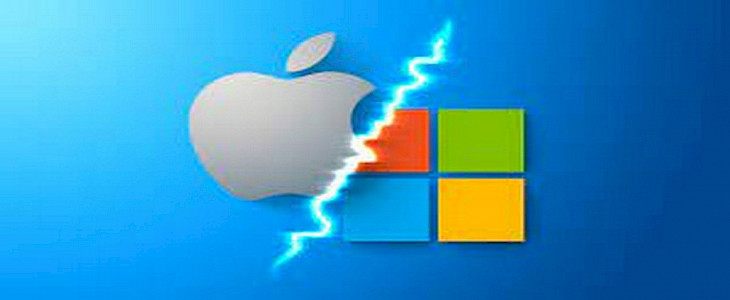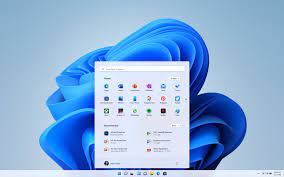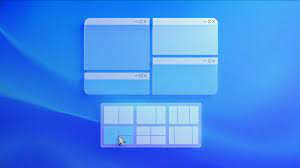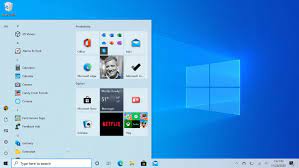
We all know about the cold war between Microsoft and the apple. But recently, it has been shown that Microsoft has a massive advantage that can be challenging for apple. A wild card so powerful that it may affect Apple massively.
And, that wild card is none other than the newly released Windows 11.
The News:
Microsoft's Windows 11 has a major advantage compared to Apple's macOS, which has increased over time and continues to grow the touch feature of its device.
Microsoft has been a fan of touch in Windows for years, and the Windows XP Tablet PC Edition on HP's TC1000 was a noteworthy early success.

The introduction of Microsoft's Surface line brought a new focus towards touch-based interfaces in Windows, and, perhaps, Microsoft has been a pioneer in the field through its early Surface 2 devices, which pushed the industry to follow.
With the Surface range expanded and Windows 10 continuing to evolve, the use of Microsoft's touchscreen has improved.
With the introduction of Windows 11, Microsoft has increased its focus on the use of touch in computing. With a particular focus on Windows 11, it was being used in various modes and incorporated touch into the UI.

It allows for "lean forward" computing, which is ideal for watching media or working in a chair. Pen-based computing is also covered under the touch, as are the different options available to achieve this (think the easy-to-use Surface Studio or using the Pro 8 in your hand.
This process is ongoing and was reflected in the announcement made this week that touch-based controls within Windows 11 are going to be enhanced with the next update. This will concentrate on layouts based on touch, which will automatically layer the app windows to display the most information possible on the screen, allowing for more efficient multitasking.

In contrast, Apple's emphasis on touch is a function that has been exclusively designed for mobile devices—specifically, the keyboard/touch combo of the iPad Pro and the iPad, as well as the iPad Pro family, which is described as "your future computer." The Mac platform was a bit sluggish as it went through the process of becoming ever-lighter and fitting into Intel's plans.
The switch to AMD-based Apple Silicon has revitalized the platform. In addition, with the introduction of the M1 chip, Apple has brought laptops, tablets, phones, and desktops together.
This is in terms of both physical (the M1 chip can be found in Mac laptops as well as the iPad Pro tablet) and software (two notable examples are emulators that allow iPad programs to work on macOS and the sharing of trackpads and keyboards via Apple Universal Control).
The reason Apple hasn't added touch capabilities to the Mac family is unanswered. There's a clear synergy with other items in the range if touch were to be added, but the wall that separates the Mac from the iPhone and iPad is still there.
A lot of hands-on experience and greater attention to the use of touch in various settings has not yet achieved an opportunity to achieve it. Microsoft has a good position, and this week's news of enhancements to touch will only enhance it.
Microsoft Windows
Microsoft Windows, commonly referred to as Windows, is a collection of operating systems with graphical interfaces that are all designed and promoted by Microsoft. Each family is targeted at specific segments within the industry of computing.
The active Microsoft Windows families include Windows NT and Windows IoT; these might include subfamilies (e.g., Windows Server or Windows
Embedded Compact) (Windows CE). The defunct Microsoft Windows families include Windows 9x, Windows Mobile, and Windows Phone.

Microsoft launched an operating system called Windows on the 20th of November, 1985. It was a graphical interface to MS-DOS due to the rising popularity of graphic user interfaces (GUIs). Microsoft Windows eventually surpassed the Mac OS, which debuted in 1984, to command more than 90% of the global personal computer (PC) market.
Apple was able to recognize Windows as infringing on their ingenuity regarding GUI development, which was applied to products like the Lisa as well as the Macintosh. Windows continues to be the largest and most widely used operating system for desktop computers across every country.
In 2014, however, Microsoft admitted to losing the majority of its market for operating systems to Android due to the rapid rise in smartphone sales of Android smartphones. As a result, as of 2014, the number of Windows devices sold was lower than the 25% of Android devices.
The comparison might not be entirely accurate since both operating systems typically have different platforms. Still, the numbers for server usage for Windows (which are comparable to those of other competitors) reveal a third market share, comparable to that of end-user use.
As of October 2021, the most current version of Windows for computers as well as tablet computers has been Windows 11. 21H2 version. The most current version of Windows for embedded gadgets can be found in Windows 10, version 21H1.

The most up-to-date version for servers includes Windows Server 2022 and Version 21H2. In addition, a specific edition of Windows can also be run on Microsoft's Xbox One and Xbox Series X/S video game consoles.





